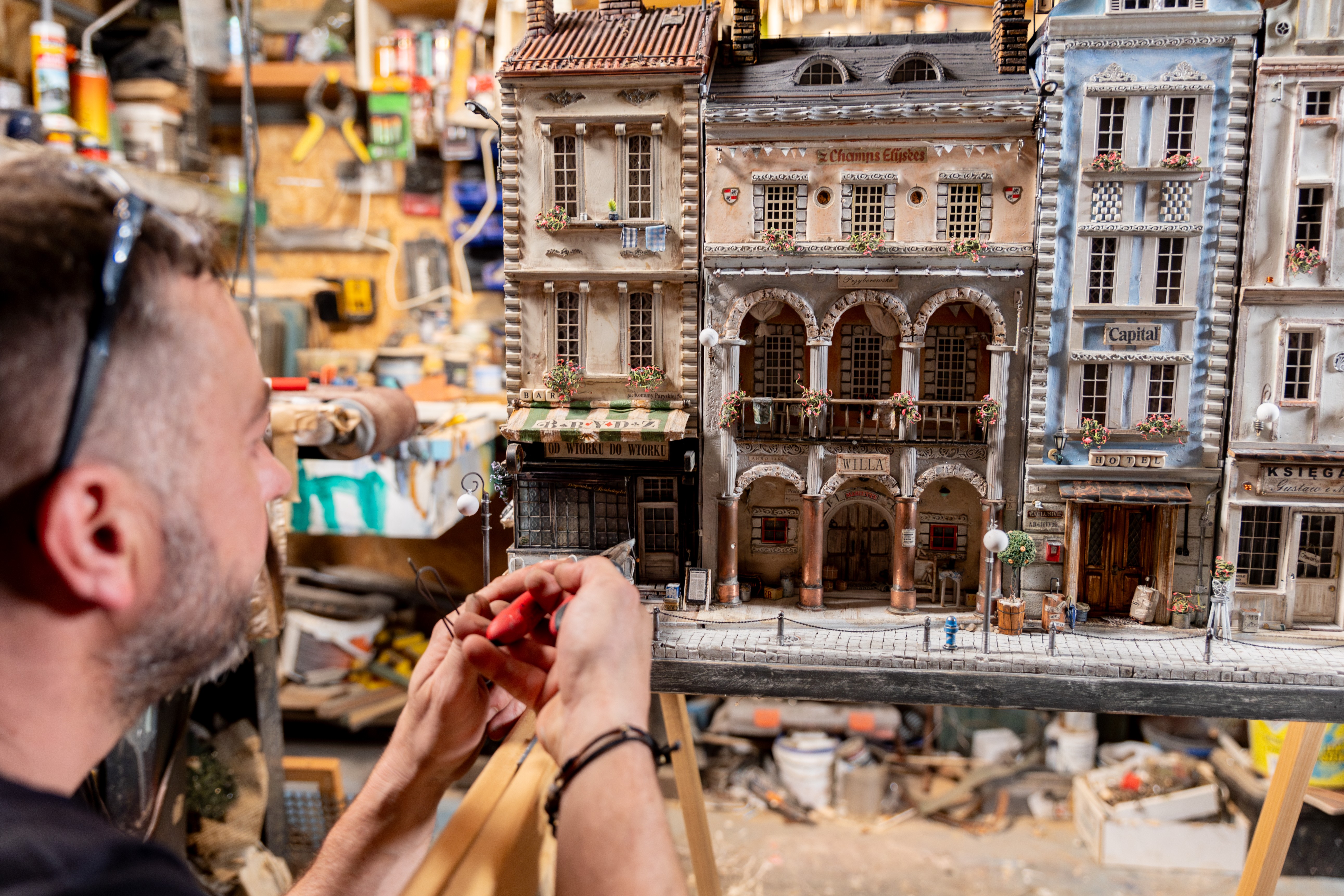Diorama
Definition:
A "Diorama" is a three-dimensional miniature or full-scale model representing a scene. These detailed models often depict historical events, natural environments, or fictional settings, creating an immersive and realistic visual experience.
Detailed Explanation:
A diorama is a highly detailed, three-dimensional representation of a scene, often enclosed in a glass case for display. These models can range in size from small tabletop displays to full-scale installations. Dioramas are used in various contexts, including museums, educational exhibits, and theatrical productions, to create lifelike and engaging representations of specific scenes or moments in time.
The term "diorama" originates from the Greek words "dia" (through) and "orama" (sight), reflecting its purpose of providing a clear and detailed view of a scene. Dioramas combine elements such as miniature figures, buildings, landscapes, and backgrounds to create a cohesive and immersive depiction.
Types of Dioramas:
Miniature Dioramas:
Small-scale models typically used for hobby projects, museum exhibits, and educational displays. These dioramas often include intricate details and can depict a wide range of scenes.
Full-Scale Dioramas:
Life-sized models used in museums and exhibitions to recreate historical events or natural habitats. These dioramas offer a more immersive experience by allowing viewers to walk around and explore the scene.
Virtual Dioramas:
Digital or augmented reality dioramas that use technology to create interactive and dynamic representations of scenes. These modern dioramas can be experienced through screens or VR headsets.
Advantages of Dioramas:
Realism:
Dioramas provide a realistic and detailed depiction of scenes, making them highly engaging and informative.
Educational Value:
They are valuable educational tools, helping viewers understand historical events, scientific concepts, or natural environments through visual storytelling.
Versatility:
Dioramas can depict a wide variety of scenes and subjects, from historical battles to natural ecosystems, making them useful in many different fields.
Challenges of Creating Dioramas:
Detail and Accuracy:
Creating a realistic and accurate diorama requires meticulous attention to detail and thorough research to ensure authenticity.
Time and Resources:
Dioramas can be time-consuming and resource-intensive to build, particularly larger or more complex models.
Maintenance:
Maintaining dioramas, especially those on display in public settings, requires regular cleaning and repairs to preserve their quality and appearance.
Uses in Performance:
Theatrical Productions:
Dioramas can be used as set pieces or background elements in theatrical productions to create specific scenes or settings.
Museum Exhibits:
Museums use dioramas to bring historical events, natural habitats, and cultural artifacts to life, providing visitors with an immersive experience.
Educational Displays:
Schools and educational institutions use dioramas to teach students about various subjects, from history and geography to biology and astronomy.
Design Considerations:
When designing and constructing a diorama, several factors must be taken into account to ensure it is effective and engaging:
Scale and Proportion:
The elements within the diorama must be accurately scaled and proportioned to create a realistic and cohesive scene.
Materials and Techniques:
The choice of materials and construction techniques should reflect the intended level of detail and durability of the diorama.
Lighting and Presentation:
Proper lighting is crucial to highlight the details of the diorama and enhance its visual impact. The presentation should also consider the viewing angles and accessibility for the audience.
Conclusion:
Dioramas are powerful tools for creating immersive and realistic representations of scenes, offering educational and aesthetic value in various contexts. Whether in museums, educational displays, or theatrical productions, dioramas provide detailed and engaging visual storytelling that can captivate and inform audiences. By combining meticulous craftsmanship with creative design, dioramas bring history, nature, and imagination to life in three-dimensional form. With careful planning and execution, dioramas can significantly enhance the understanding and appreciation of complex scenes and concepts.


